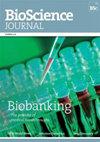特殊肥料的施用及其对玉米农艺和土壤肥力的影响
IF 0.6
4区 农林科学
Q3 AGRICULTURE, MULTIDISCIPLINARY
引用次数: 0
摘要
玉米的营养需要量高,特别是氮磷钾施肥。然而,常规施肥对这些养分的损失很大,主要通过挥发、淋失、吸附和固定等方式,这可能反映了玉米植株的发育和产量。使用效率更高的肥料旨在缓解这些限制,减少因养分逐渐释放而造成的潜在损失。本研究旨在比较种植时充分施用不同剂量和特殊氮磷钾肥对玉米植株的营养、生长和产量的影响及其对土壤的残留效应。采用3x4阶乘方案的随机区组设计,共4个重复。第一个因素包括传统的矿物、聚合物包膜和有机无机+ PGPB肥料。第二个因素包括0、60、90和120 kg ha-¹的氮磷钾剂量。该研究评估了栽培后土壤的营养生长、叶面营养(N、P、K)、产量生长成分、生产力、盈利能力和剩余钾含量。常规矿肥在地上部分产生更多的干生物量。常规肥料和特种肥料的收益相似。然而,后者在营养和生产生长方面的总体表现更好,表明施用剂量可能减少而不影响粮食产量,特别是在有机肥料+ PGPB施肥中。该处理也表现出较高的土壤钾残留效应。本文章由计算机程序翻译,如有差异,请以英文原文为准。
Application of special fertilizers and their effects on the agronomic aspects of maize and soil fertility
Maize has a high nutritional requirement, especially regarding NPK fertilization. However, conventional fertilization with these nutrients presents a high loss potential, mainly by volatilization, leaching, adsorption, and fixation, which may reflect on the development and yield of maize plants. Using fertilizers with increased efficiency seeks to mitigate these limitations, reducing potential losses due to gradual nutrient release. This study aimed to compare the nutrition, growth, and production of maize plants subjected to different doses and special NPK fertilizers fully applied at planting and their residual effect on the soil. It was a randomized block design in a 3x4 factorial scheme with four replications. The first factor consisted of conventional mineral, polymer-coated, and organomineral + PGPB fertilizers. The second factor included doses of 0, 60, 90, and 120 kg ha-¹ of NPK. The study evaluated vegetative growth, foliar nutrition (N, P, and K), yield growth components, productivity, profitability, and residual K content in the soil after cultivation. The conventional mineral fertilizer produced more dry biomass in the aerial part. Profitability was similar between conventional and special fertilizers. However, the latter performed better overall in vegetative and productive growth, showing a potential reduction of the applied doses without compromising grain yield, especially in organomineral + PGPB fertilization. This treatment also presented a higher residual effect of K on the soil.
求助全文
通过发布文献求助,成功后即可免费获取论文全文。
去求助
来源期刊

Bioscience Journal
Agricultural and Biological Sciences-General Agricultural and Biological Sciences
CiteScore
1.00
自引率
0.00%
发文量
90
审稿时长
48 weeks
期刊介绍:
The Bioscience Journal is an interdisciplinary electronic journal that publishes scientific articles in the areas of Agricultural Sciences, Biological Sciences and Health Sciences. Its mission is to disseminate new knowledge while contributing to the development of science in the country and in the world. The journal is published in a continuous flow, in English. The opinions and concepts expressed in the published articles are the sole responsibility of their authors.
 求助内容:
求助内容: 应助结果提醒方式:
应助结果提醒方式:


